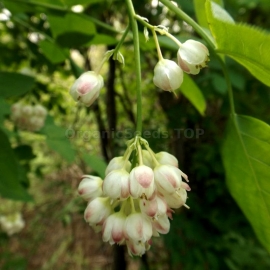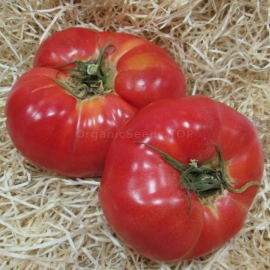







Organic European Bladdernut Seeds (Staphylea Pinnata)
1.39 €
The large bladder like fruiting structures of this medium sized shrub are just irresistible to curiosity each one containing one or more chestnut brown seeds that are a bit larger than a fat pea.
-
Organic Bladder Senna (Colutea)
The large bladder like fruiting structures of this medium sized shrub are just irresistible to curiosity each one containing one or more chestnut brown seeds that are a bit larger than a fat pea.
Although a native European species this delightful plant with its small, fragrant, bell-shaped white blossoms are a rare sight in Europe today.
It is tolerant of a wide range of soils so long as they are not too dry but prefers a rich, moist loamy soil in full sun or semi-shade. A very ornamental shrub and is hardy to about -20°C. Ultimately can grow to a height and spread of 4.5m (14ft) and can reproduce from suckers.
The seeds naturally have a deep dormancy which although is not difficult to breakdown does require a degree of patience. Full details on how to do this are sent with every order.
How to Grow
First prepare a free draining substrate into which the seeds are to be mixed, this can be a 50/50 mixture of compost and sharp sand, or perlite, vermiculite. The chosen substrate needs to be moist (but not wet), if you can squeeze water out of it with your hand it is too wet and your seeds may drown and die.
Mix the seeds into the substrate, making sure that their is enough volume of material to keep the seeds separated. Place the seed mixture into a clear plastic bag (freezer bags, especially zip-lock bags are very useful for this -provided a little gap is left in the seal for air exchange) If it is not a zip-lock type bag it needs to be loosely tied.
Write the date on the bag so that you know when the pre-treatment was started.
The seeds first require a period of warm pre-treatment and need to be kept in temperatures of 20 Celsius (68F) for a period of 12 weeks . During this time make sure that the pre-treatment medium does not dry out at any stage or it will be ineffective!
Next the seeds require a long cold period to break the final part of the dormancy, this is achieved by placing the bag in the fridge at (4 Celsius or 39F) for 27 weeks. It is quite possible for the seeds to germinate in the bag at these temperatures when they are ready to do so, if they do, just remove them from the bag and carefully plant them up.
When the period of pre-treatment has finished the seed should be ready to be planted. Small quantities can be sown in pots or seed trays filled with a good quality compost and cover them with a thin layer of compost no more than 1 cm (half an inch) deep. For larger quantities it is easiest to sow the seeds in a well prepared seedbed outdoors once the warm and cold pre-treatments have finished and wait for the seedlings to appear.
This species is well known to have a slow and sporadic germination. Any seeds that have not germinated can have the whole warm and cold process repeated again to enable more seeds to germinate. Fresh seedlings can keep germinating for several years after the original sowing date.
Do not expose newly sown seeds to high temperatures (above 25 Celsius). Keep the seedlings well watered and weed free.
Growth in the first year is usually between 8 and 15 cm depending on the time of germination and cultural techniques and developing seedlings are usually trouble free. Allow them to grow for 2 or 3 years before planting them in a permanent position.
Products Viewed Before
Product code: 8256
1.14 €
3.15 € (Sale: 63%)
Mid-season, very productive variety, tall plants, 1.5 m high, fruits are bright, elastic enough, excellent taste, average weight 300-400 grams, some up to 1 kg.

